 My personal radio observatory is nestled in a small village community located in Ontario, Canada along the shores of Lake Erie.
I started my SETI project on September 6, 2016 with the purchase of a ten-foot satellite dish; a fifty-dollar (CDN) investment that would soon become the reflector for an L-band radio telescope. This research-grade radio telescope utilized a SpectraCyber II receiver, providing an excellent platform to perform astronomical observations.
On December 24, 2016 the L-band radio telescope was brought on-line to search for radio signals from other solar systems. It used Digital Signal Processing (DSP) software from SETI Net and an inexpensive RTL-SDR TV tuner.
The system is under continuous development and is currently undergoing a transformation from a meridian transit to an azimuth-elevation capable system to allow for star tracking. It will now be feeding signals to a HackRF One Receiver. The HackRF One Software Defined Radio (SDR) was graciously provided by Great Scott Gadgets, thank you! I really appreciate it's ability to scan frequencies above 2GHz which will be a great asset to the observatory. The new HackRF One will be used for both SETI and radio astronomy experiments.
I enjoy building the radio telescope as much as I enjoy operating it. I hope to bring the telescope on-line so that others can do radio astronomy observations remotely, or monitor the digital signal processing results from SETI observations.
My personal radio observatory is nestled in a small village community located in Ontario, Canada along the shores of Lake Erie.
I started my SETI project on September 6, 2016 with the purchase of a ten-foot satellite dish; a fifty-dollar (CDN) investment that would soon become the reflector for an L-band radio telescope. This research-grade radio telescope utilized a SpectraCyber II receiver, providing an excellent platform to perform astronomical observations.
On December 24, 2016 the L-band radio telescope was brought on-line to search for radio signals from other solar systems. It used Digital Signal Processing (DSP) software from SETI Net and an inexpensive RTL-SDR TV tuner.
The system is under continuous development and is currently undergoing a transformation from a meridian transit to an azimuth-elevation capable system to allow for star tracking. It will now be feeding signals to a HackRF One Receiver. The HackRF One Software Defined Radio (SDR) was graciously provided by Great Scott Gadgets, thank you! I really appreciate it's ability to scan frequencies above 2GHz which will be a great asset to the observatory. The new HackRF One will be used for both SETI and radio astronomy experiments.
I enjoy building the radio telescope as much as I enjoy operating it. I hope to bring the telescope on-line so that others can do radio astronomy observations remotely, or monitor the digital signal processing results from SETI observations.
Alien Signals
It is one of my dreams to become a podcast host at some point. I have been thinking of creating an Alien Signals podcast focused mainly on Amateur SETI. If you would be interested in listening to a SETI-themed podcast, please send me an email and let me know!
SETI Station CA01
Dish
| Type | Solid Aluminum |
| Diameter | 48 inches |
| Depth | 8 inches |
| Focal Point | 18 inches |
|
Receiver
|
Software
|
Update 2025-05-30
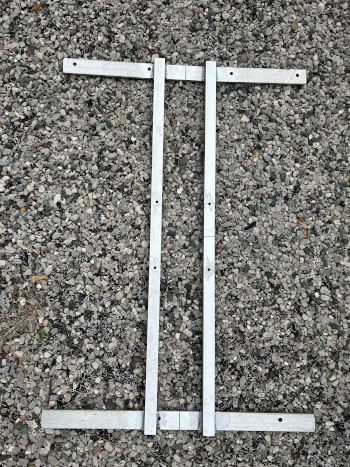
|
This is the dish bracket for the four foot aluminum dish. The bracket is also made of aluminum and will be fastened with stainless steel bolts.
|
Update 2025-05-29
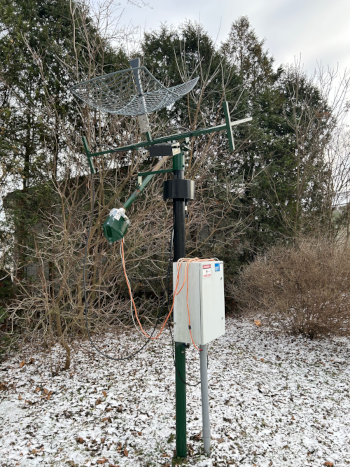
|
This is the dish configuration as of today. It consists of a small temporary dish that was mounted in place of the original ten foot L-Band dish. The new dish will be a four foot aluminum dish, but will be focused on much higher frequencies.
|
Update 2025-05-24
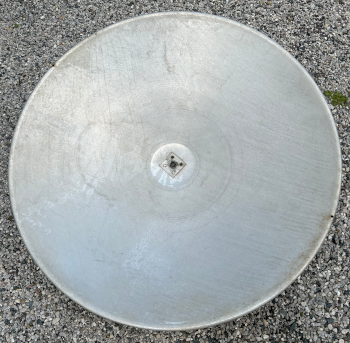
|
The dish I plan to use for SETI is a 48 inch (4 foot) primary focus dish with a depth of 8 inches. Using ChatGPT, I determined the focal point is 18 inches which I confirmed using another on-line tool.
|
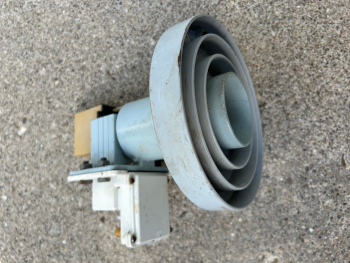
|
The 4GHz feed horn I will be using with this dish is a C-Band Satellite feed horn. The LNB shown will not be used for SETI.
|
Update 2025-05-23
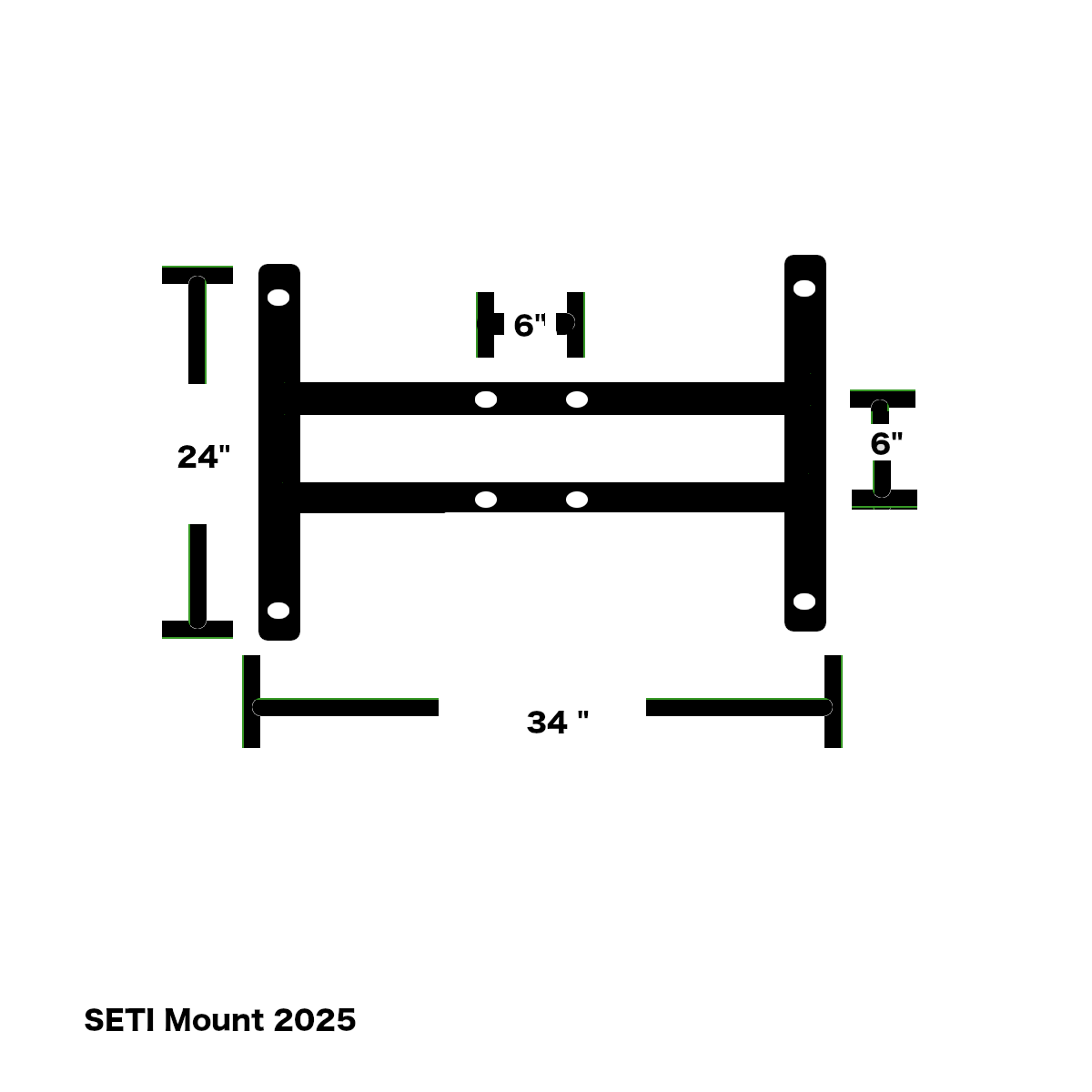
|
I have drawn up a simple diagram for an aluminum mount for my 4 foot aluminum dish. I will be mounting the dish with a 4GHz feed horn, fed into a HackRF One from Great Scott Gadgets.
|
Copyright © 2016-2025 Scott Carter. All Rights Reserved.

|






